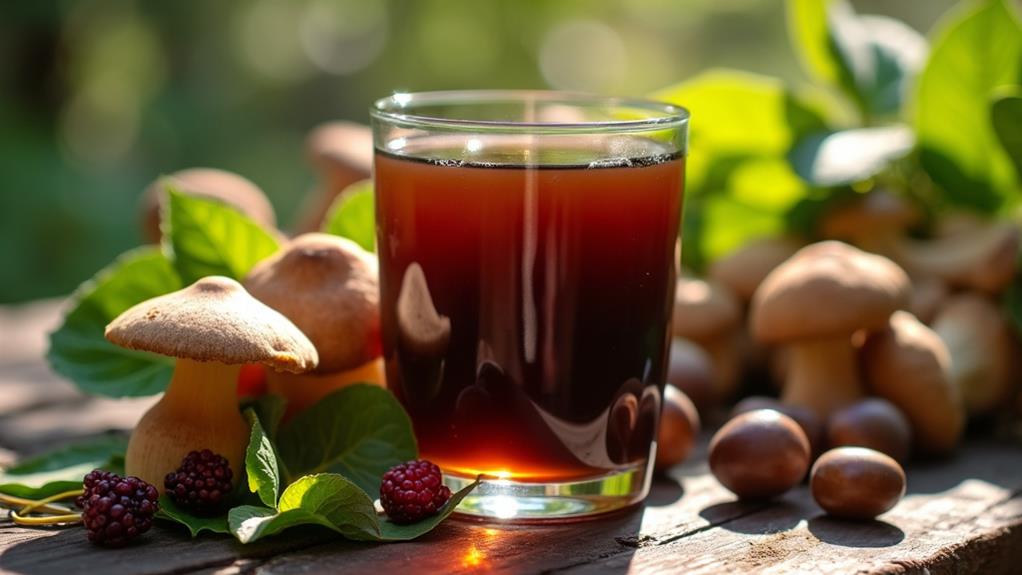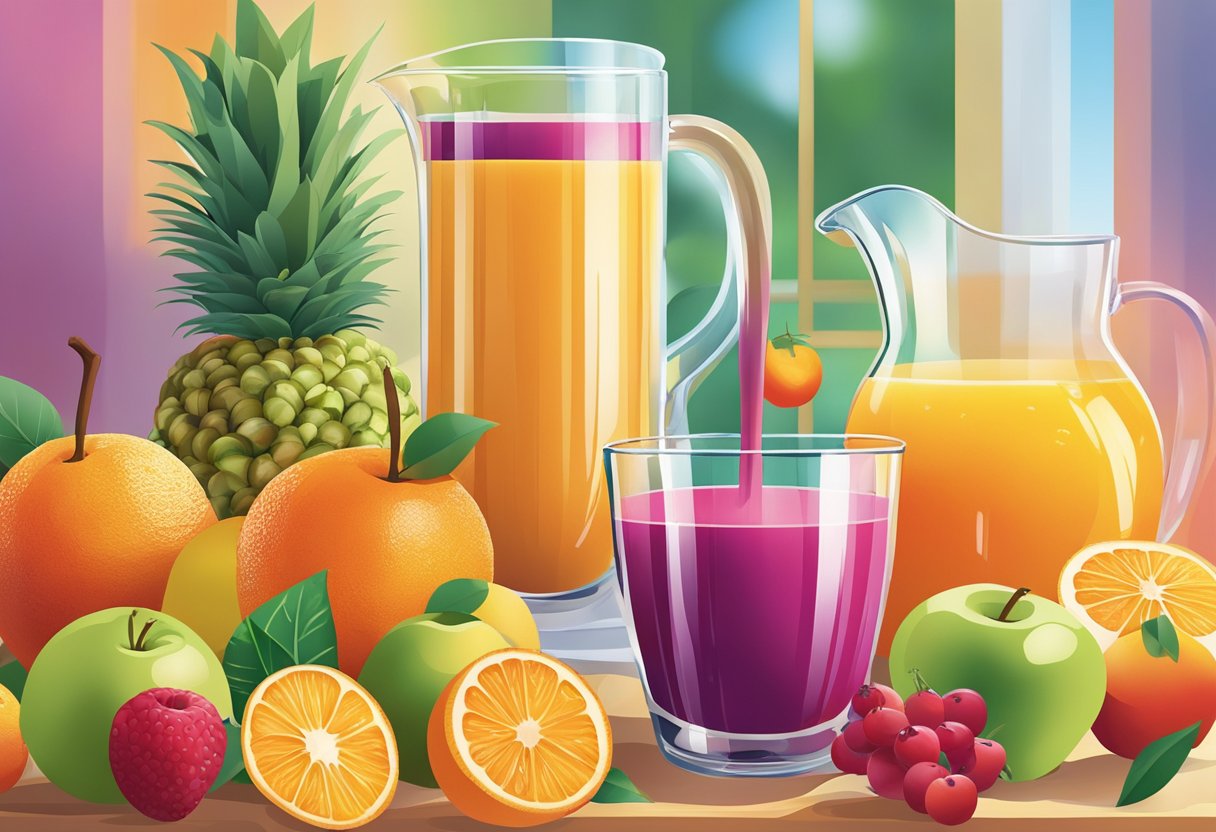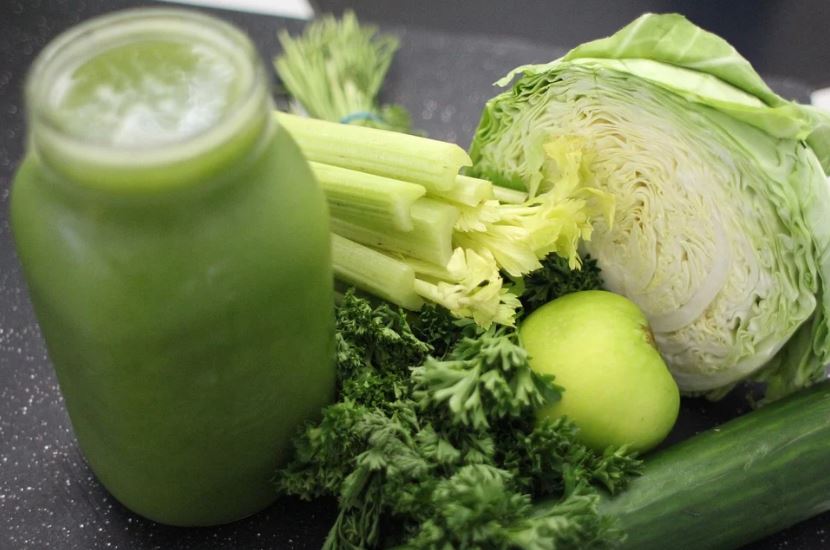Pesticide-Free Produce: What You Need to Know
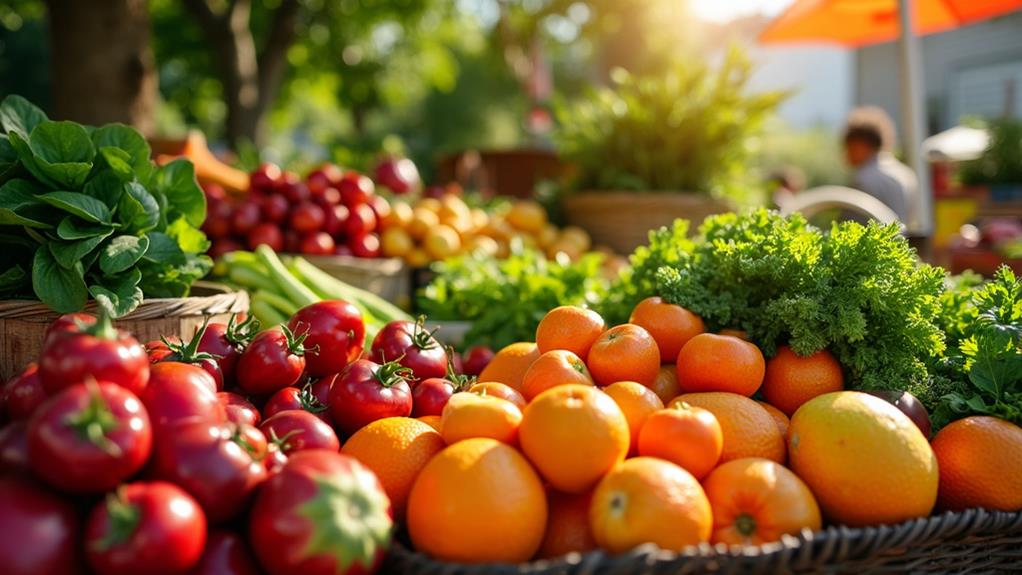
Opting for pesticide-free produce means you're reducing synthetic chemical intake while supporting healthier agriculture. Pesticide residues can pose health risks, especially to children and pregnant women, but washing your produce cuts down on these residues considerably. Pesticide-free isn't the same as certified organic, though both aim to minimize harmful chemicals. Since there's no official certification for pesticide-free items, it's wise to seek out clear labeling to make informed choices. These produce options often benefit the environment by encouraging biodiversity. From farmer's markets to CSA programs, there are plenty of ways to uncover more about the benefits and sourcing of such produce.
Understanding Pesticide-Free Produce
Pesticide-free produce's appeal lies in its promise of fewer synthetic chemicals on your fruits and vegetables. When you choose pesticide-free options, you're opting for produce grown without synthetic pesticides, though natural ones might still be used. This choice often relates to concerns about health risks associated with pesticide residues. While organic produce must meet strict USDA standards, pesticide-free produce lacks such certification. This means its practices aren't as rigorously monitored, but it still offers a reduced pesticide exposure compared to conventional produce.
The Environmental Working Group (EWG) is a valuable resource when steering through your choices. They provide the Dirty Dozen and Clean 15 lists, highlighting produce with the highest and lowest pesticide residues. By consulting these lists, you can make informed decisions about which fruits and vegetables to prioritize as pesticide-free or organic.
Despite its benefits, keep in mind that pesticide-free doesn't guarantee zero pesticide presence. Residues can linger in soil and on crops. To further minimize exposure, wash all your fruits and vegetables thoroughly. Regardless of being organic, pesticide-free, or conventional, this simple step helps reduce any remaining pesticide residues.
Organic vs. Pesticide-Free
When steering through the world of produce, you'll encounter both organic and pesticide-free options, each with its own set of characteristics. Organic foods are products that adhere to stringent USDA organic standards, which means they're grown without synthetic fertilizers, GMOs, or synthetic pesticides. This certification assures you that these products meet specific criteria, often resulting in lower pesticide residues and potentially fewer health effects. In contrast, pesticide-free foods don't have formal certifications, which can make identifying them a bit challenging. They might still use natural pesticides or other farming practices that aren't standardized.
Organic farming bans synthetic pesticides, ensuring a strict approach to food safety. However, pesticide-free farming might still involve the use of natural or even some synthetic substances. This may result in varying levels of chemical exposure based on individual farming practices. As a result, pesticide residues in pesticide-free produce can differ considerably.
While many consumers perceive organic foods as healthier due to their certified standards, pesticide-free options might not offer the same assurances regarding chemical use. Understanding these differences can help you make informed choices about the produce you consume and its potential impact on your health.
Health Benefits
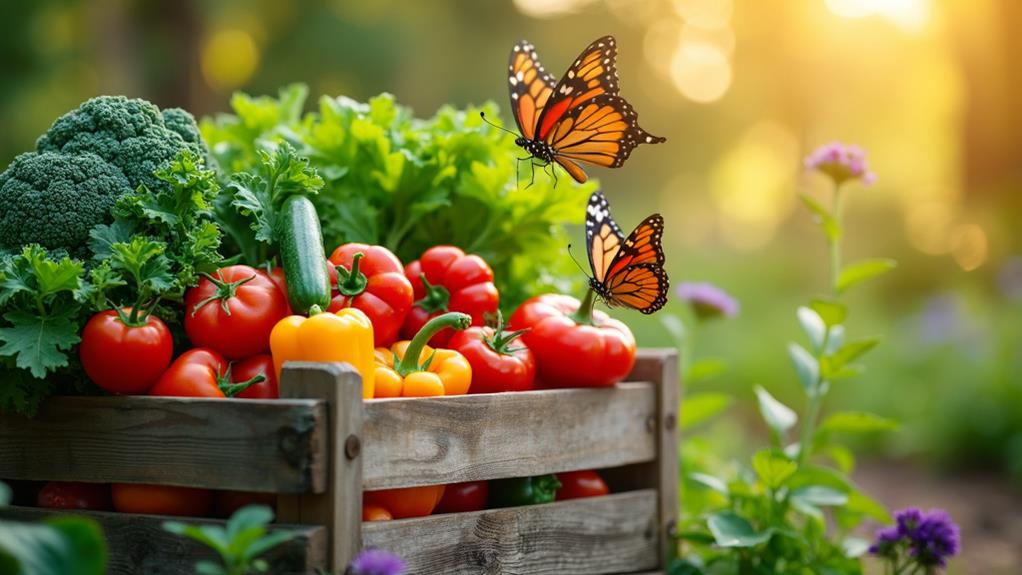
Choosing to consume pesticide-free produce can offer several health benefits, especially if you're concerned about synthetic pesticide residues. When you opt for pesticide-free fruits and vegetables, you reduce your pesticide exposure, which is vital for sensitive individuals and vulnerable groups like pregnant women and children. These groups are more susceptible to health risks from synthetic chemicals. By selecting pesticide-free options, you align with consumer preferences for natural and sustainable food sources that support your health and well-being.
A diet rich in fruits and vegetables, regardless of being organic or pesticide-free, is linked with a reduced risk of chronic diseases such as heart disease and certain cancers. Plus, organic farming methods often produce food that's free from synthetic pesticides, offering a healthier choice for those worried about chemical residues. It's significant to understand that while pesticide-free produce might still contain natural substances used in pest control, these are generally less harmful than their synthetic counterparts.
Here's why choosing pesticide-free produce can be beneficial:
- Lower risk of allergic reactions and health risks from synthetic residues
- Reduced pesticide exposure for vulnerable groups
- Supports a diet rich in fruits and vegetables
- Aligns with natural and sustainable food preferences
Environmental Impact
Beyond personal health benefits, opting for pesticide-free produce plays a significant role in protecting the environment. Pesticides used extensively in agriculture, with the market reaching about $84.5 billion in 2019, pose serious environmental consequences. They contribute to the decline in wildlife populations and reduced biodiversity, which disrupts ecosystems and food chains globally. By choosing pesticide-free options, you help preserve biodiversity and maintain healthy ecosystems.
Historical pesticide use, such as DDT, has left a legacy of severe environmental repercussions, including species extinction and long-lasting soil contamination. These chemicals don't just vanish; they persist in the environment, affecting both soil and water quality. This persistence leads to secondary poisoning, where non-target species like birds and aquatic life suffer, further disrupting the ecological balance.
You play an essential role in supporting research aimed at understanding and mitigating these impacts. By choosing pesticide-free produce, you're advocating for agricultural practices that prioritize environmental health. This choice encourages farmers to adopt methods that maintain the delicate balance of ecosystems, prevent soil contamination, and protect biodiversity. Your decision can drive change towards a more sustainable and ecologically balanced future.
Economic Considerations
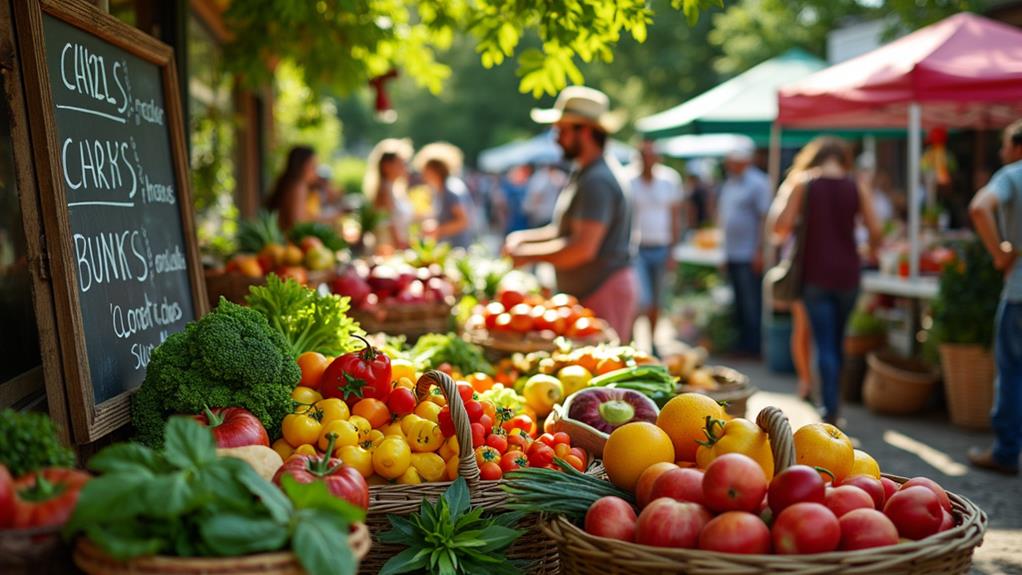
Embracing pesticide-free produce isn't just an environmentally conscious choice; it's a smart economic one too. With soaring consumer demand, farmers are tapping into new market opportunities. Unlike organic farms, which face stringent regulatory requirements, pesticide-free farms enjoy more flexibility. This reduced burden makes it easier and often cheaper for small-scale farmers to adopt pesticide-free practices, resulting in a potential price advantage for you at the checkout.
However, the lack of formal certification can lead to inconsistency in farming practices and product quality. As a consumer, you might face challenges identifying pesticide-free produce due to the absence of standardized labeling. Yet, the economic benefits for farmers are significant, as they can attract local consumer interest by offering a fresher and potentially more affordable alternative to organic produce.
Here are some economic considerations:
- Lower costs: Fewer regulatory requirements mean reduced expenses for farmers.
- Market growth: Increasing consumer demand creates more market opportunities.
- Price advantage: Potentially lower prices compared to certified organic produce.
- Community support: Local consumer interest can bolster farm profitability.
Opting for pesticide-free produce not only supports sustainable practices but also strengthens local economies by encouraging community involvement and investment.
Buying Guide
As you investigate the economic benefits of pesticide-free produce, understanding how to make informed purchasing decisions becomes significant. Start by seeking out clear labeling that states "Pesticide Free," as this designation isn't as standardized as organic produce certification. To simplify your search, use resources like the AgWe platform, which connects you with farms committed to pesticide-free practices and informs you about their product availability within the food supply chain.
A crucial tool in your buying guide arsenal is the EWG's Clean Fifteen list. This list highlights fruits and vegetables with typically lower pesticide residues, helping you choose produce with confidence. When considering where to buy, local farmers' markets are excellent venues. They provide opportunities to directly inquire about pesticide use and guarantee you're making educated decisions about your produce.
Keep in mind, some farms might use rodenticides in non-crop areas but still qualify as pesticide-free. Always ask about specific practices to clarify any doubts. Visiting farms directly can offer supplementary insights and assurance that your choices align with your values, guaranteeing your purchases support a healthier lifestyle and a safer environment.
Label Recognition
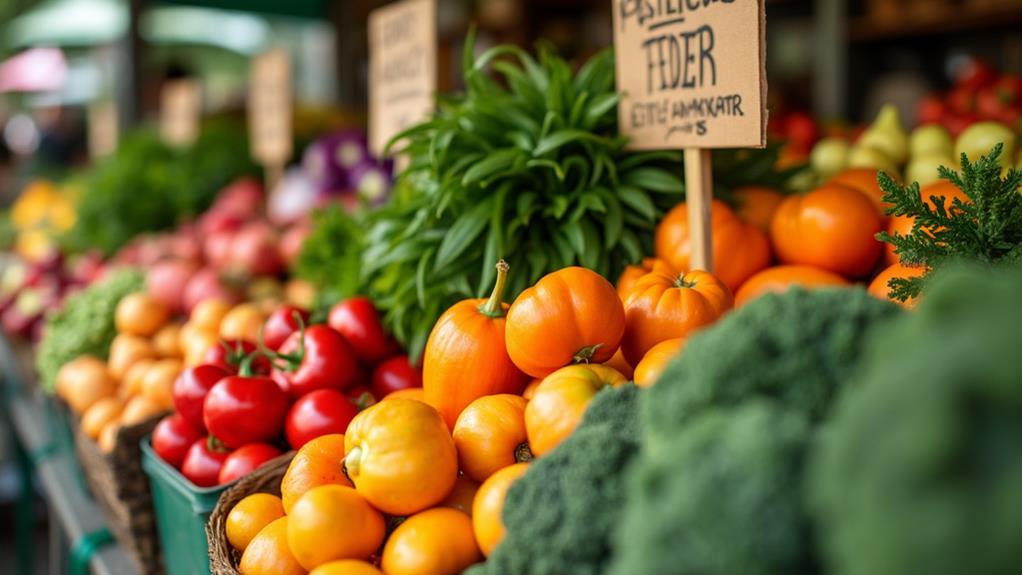
Recognizing labels on pesticide-free produce can be a bit challenging due to the lack of standardized certifications akin to those for organic products. Unlike organic foods, which carry certifications like "USDA Organic," pesticide-free produce doesn't have a formal label. This means when you're shopping for produce food, you'll need to ask questions about farming practices directly. Some products might display "Pesticide Free" labels, but these aren't backed by stringent certification processes. It's essential to verify such claims by asking about the methods used.
The Environmental Working Group (EWG) offers guidance with their "Dirty Dozen" list, highlighting produce with high pesticide residues, and the "Clean 15" for those with lower residues. These lists can be a helpful tool when you're traversing the complex world of produce food.
To help you understand better, consider these points:
- Organic certifications require no synthetic substances for at least three years.
- Pesticide-free produce might still use natural pesticides.
- "Pesticide Free" labels need verification of farming practices.
- EWG lists assist in choosing produce with minimal pesticide exposure.
Nutritional Insights
When choosing pesticide-free produce, you're tapping into a nutritional powerhouse that greatly supports your health path. These fruits and vegetables offer nutritional content comparable to organic options, supplying vital vitamins, minerals, and antioxidants that are critical for maintaining a balanced diet. They're packed with fiber and phytochemicals, promoting better health outcomes and reducing the risk of chronic diseases like diabetes and heart disease.
Eating pesticide-free produce provides notable health benefits. By consuming these foods regularly, you support your body's defenses against chronic diseases. The natural pesticide residues they might carry are generally less harmful than synthetic ones, making them a healthier eating option. This guarantees you're maximizing nutritional content while minimizing potential risks.
Incorporating a variety of pesticide-free fruits and vegetables into your diet enriches your nutritional intake. To further improve their health benefits, washing and peeling these items can help reduce any residual pesticide traces. This simple step increases not just the safety but also the appeal of your meals. By choosing pesticide-free produce, you're investing in your health, allowing you to enjoy more lively, nutrient-rich foods every day.
Reducing Pesticide Exposure
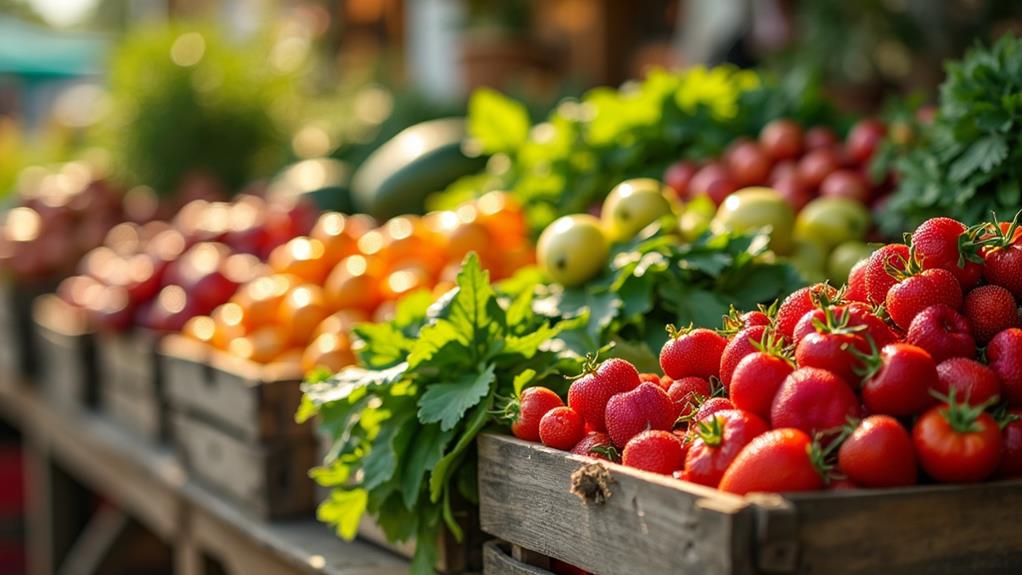
Reducing your pesticide exposure is crucial for maintaining a healthier lifestyle. By making informed choices about your fresh produce, you can greatly reduce the risks associated with synthetic pesticides. Start by familiarizing yourself with the Environmental Working Group's "Dirty Dozen" list, which highlights fruits and vegetables with the highest pesticide residues. Prioritizing organic produce for these items helps lower your pesticide intake, as organic farming limits the use of synthetic pesticides.
To further protect yourself, consider these practical steps:
- Wash Thoroughly: Properly washing your fruits and vegetables can remove up to 90% of surface pesticides, helping you reduce pesticide residues.
- Choose Organic: Opt for organic produce, especially for items on the "Dirty Dozen" list, to minimize exposure to harmful chemicals.
- Substitute Wisely: Swap high-risk items like strawberries and spinach with choices from the "Clean Fifteen" list to lower pesticide risks without compromising your diet.
- Limit High-Risk Items: For vulnerable groups, such as pregnant individuals and young children, limit consumption of high-risk produce to less than one serving per day.
Supporting Local Farms
Supporting local farms that practice pesticide-free farming offers numerous benefits beyond just reducing pesticide exposure. By choosing these farms, you not only improve community sustainability but also reduce the carbon footprint linked to food transportation. Local farms often prioritize sustainable practices that contribute to healthier soil and increase biodiversity. This approach helps maintain a thriving ecosystem, which is crucial for the long-term health of our planet.
Engaging with local farmers' markets provides a fantastic opportunity to access pesticide-free produce while building a direct relationship with the farmers who grow your food. You gain firsthand insight into their sustainable practices and can appreciate the effort behind the fresh produce you bring home. Many local farms also offer Community Supported Agriculture (CSA) programs. Joining a CSA means receiving regular deliveries of fresh, pesticide-free produce, ensuring your diet is rich in nutrients while supporting local agriculture.

